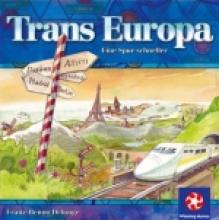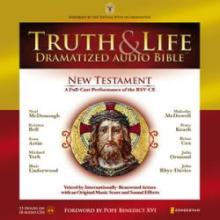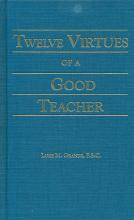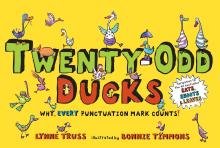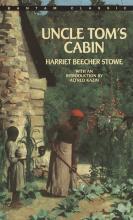No name
Trans Europa
Trans Europa has a European map gameboard on which you connect major cities (chosen from the card deck) with "train tracks." It can be played on a simple level by younger children (the recommendation is 8 and up) but can involve rather complex strategies as well.
Each round takes only a few minutes (5 to 10 at the most) and several rounds combine to form an entire game. (There is a simple scoring system alongside the board used through an entire game.)
The materials are of good quality, nice colors and easy to sort out. We thought it was particularly interesting that the pronunciation and spelling of many of the cities are not those commonly used in the U.S. It might be beneficial to have a map of Europe on the wall with which to compare names and identify the country each city is located in.
Highly recommended!
Recommended for ages 8 and up, For 2 to 6 players
Game Board with cards and small wooden playing pieces
True to the Old Flag
Truth and Life Dramatized Audio Bible - New Testament
This is a beautifully-performed, professionally produced complete dramatization of the New Testament in the renowned Revised Standard Version, Catholic Edition (sometimes referred to as the Ignatius Bible). John Rhys-Davies (who plays Gimli in Peter Jackson's Lord of the Rings films) as narrator leads a great cast that includes Neal McDonough (Minority Report, Band of Brothers) as Jesus, Julia Ormond (Sabrina, First Knight) as Mary, Sean Astin (Sam in Peter Jackson's Lord of the Rings) as Matthew and Michael York (Jesus of Nazareth, Murder on the Orient Express) as Luke.
There was a time, not long ago, when such beautiful biblical resources for families were only found with the Protestant versions of the Bible. Happily that is no longer the case!
You can listen to free audio samples at the Ignatius Press website: Truth and Life Dramatized Audio Bible. This resource can be ordered on 18 CDs from many bookstores or it can be ordered as an audio download through Audible.com. Ignatius Press offers this in a special package that includes a bonus audio CD from Steve Ray (from the Footprints of God Series) on the Gospel of St. John.
Truth Was Their Star
My one and only complaint with the book is the inaccurate statement in the book that people thought that the world was flat during the time of Christopher Columbus. This can be easily corrected by pointing out to the child that this is untrue. Christopher Columbus believed that the world was round, and therefore was hoping to go to the east by sailing west.
Originally published in 1947, this paperback is 124 pages with a beautiful silhouette on the cover. The suggested reading level is Gr. 6 to adult, but I think a younger child - advanced 3rd grade, 4th or 5th - would enjoy the book. It would also make an ideal read aloud to a younger child.
Twelve Virtues of a Good Teacher
Based on twelve virtues that St. John Baptist de La Salle, patron saint of teachers, thought important for teachers to know, Twelve Virtues of a Good Teacher is a reprint from 1962 that elaborates on these virtues. St. John Baptist de La Salle was an educational reformer and founder of the Brothers of Christian Schools in France during the 17th Century.
Although it is easy to understand, it is a book to read, digest, and reflect upon over and over again. In fact, it is a book that you would like to highlight every couple of pages, because of the pearls of wisdom it provokes the reader to meditate on. Even though the book is primarily written for teachers and many of the examples are addressed specifically for teachers, there is much that could be applied to parenting, since parents are the primary educators of their children, whether or not they choose to homeschool them.
When we are in the midst of the school year or even as we are planning the coming school year, it is easy for us to focus on the curriculum. Much of education is really character formation. It is the setting of the children's habits for a lifetime. What is a virtue? . . ."Virtue is a good habit"(46). What kind of virtues do we want our children to strive for? We can begin by setting an example for our children by striving to live the twelve virtues discussed in this book. By living them on a daily basis, we will be inculcating in our children habits that will last them a lifetime.
Too often as parents, we think, "if only" this child was more cheerful, patient, kind, etc., life would be so much simpler. It is much easier to focus on the faults of the child or the problem and forget to analyze our response to the child or the situation. This book is a wake up call to the teacher to consider his or her role in the education of the child. What is my example to my students?
By reading the list of virtues covered in this book (wisdom, prudence, piety, zeal, generosity, justice, kindness, firmness, humility, patience, seriousness, and silence), we may think, "What's the big deal? Is this just another self-help book? I already know those things." But do we really? And more importantly, do we live them?
This book asks the Catholic teacher to pause and carefully consider, "Do I live these virtues?" As Catholics, our viewpoint as teachers and parents should be radically different. We need to meditate on each one of these virtues. For example, "Wisdom sees the integrity of the Divine Plan; by its light the truly wise man sees–at least in broad outline–the relationship of one truth to another, the beginning and the end of Creation, one principle to another"(26). The teacher is asked "to see with the eyes of God"(26) and not the eyes of man. Another quote for the reader to contemplate is "Above all, wisdom enables a teacher to discern the part played by his own efforts in the scheme of Divine Providence, his high calling as a co-operator with God in His plans for men"(27).
In our striving for academic excellence, as parent-teachers with high and noble goals, we may sometimes put our pride before the needs of the child. In discussing the virtue of prudence, the author comments, "There is a time for the teaching of Dostoevski or calculus, but the prudent man reflects long and weighs the pros and cons carefully before, if ever, he attempts to teach them in a sophomore high-school class"(43).
When discussing the virtue of piety, the author reminds us that our example is of paramount importance. He quotes St. La Salle, "'Let us practice before their eyes what we are trying to teach them. We will make a greater impression on them by a wise and modest conduct than by a multitude of words'"(53). The author reminds the reader that "In a thousand ways he reveals to his students every day the depth and reality of his devotion to God"(53).
These are but a few of the pearls of wisdom to arouse the reader to examine her role as teacher in the impressionable lives of her students. As teachers and parents, we are learning right along beside our students. We are learning to strive to live the life of a saint. This is a difficult goal. In a world that offers many distractions, this book refocuses our attention on the higher things. It offers advice and encouragement to be a better teacher, and in a round about way, to be a better parent.
In closing, let us ponder one last thought. "It is kindness, the virtue which flows from the heart and leads the teacher to think of and to act toward the students as Christ would, that is of paramount importance for him, if he is to effect the greatest good in his students" (95). . . ."acts of kindness spring from love, in imitation of the acts of a loving Christ who said, 'Love one another, as I have loved you'(John 13:34)"(95).
Originally published by Sheed & Ward, 1962. Re-published by Roman Catholic Books in around 2000.
Twenty and Ten
Twenty-Odd Ducks
Lynne Truss does it again, this time stressing the correct use of the hyphen, parenthesis, question and exclamation marks and also more comma use. I feel that my younger kids will have a wonderful and visual grasp of punctuation as they grow up exposed to Truss' humor and fresh approach to grammar! If you haven't enjoyed her first punctuation picture books, don't miss them: Eats, Shoots and Leaves and The Girl's like Spaghetti!
Typing Tutor 10
CD ROM for Windows 95/98 and Power Macintosh Used on Windows ME and Windows XP systems for this review
In the era of the personal computer, good typing skills are essential. Children will benefit tremendously from learning to type while they're still in grade school, and Typing Tutor 10 is all you'll need to teach this valuable skill.
The program begins by asking for skill level (beginner, hunt-and- peck, or touch typist). Depending on the level, there may be a placement test. After that, there are 32 standard lessons, plus additional customized lessons for certain keys, or for strengthening certain fingers. A dynamic display shows the proper placement of fingers on the keyboard for each letter as it's typed. An envelope icon appears on the screen for each new lesson, containing instructions for what to do next.
A great feature of this program is the customization menu, which allows you to adapt the program in a myriad of ways. The learner (or teacher) can set the length of lessons (from 1 to 9 minutes), the background color and music (with selections from classical, jazz, pop, etc.), the font size, and more. The program has "practice sessions", with over a hundred different excerpts from books and magazines. Many of the selections are classics (Tom Sawyer, Alice in Wonderland, Sense and Sensibility). I found only one magazine article that might be objectionable (in the category of New Age, on "Channeling"). The solution is simple: use the customization screen to eliminate that category as a choice.
There are eight highly entertaining games, which are a nice break from the lessons while still providing practice time. My kids and I have had great fun trying to outrace the leaping frog on the stone path by typing words more rapidly than the frog can jump, or trying to keep our log-rolling contestant on his spinning log by typing as rapidly and accurately as possible.
Progress reports, which can be viewed onscreen or printed out, give a thorough summary of lessons completed, length of sessions in minutes, typing speed in words-per-minute, and accuracy ratings. These make a nice portfolio entry for homeschool record-keeping.
I would recommend Typing Tutor 10 for children starting at about age 10, after they've had a few years to work on their penmanship, and at just about the time they're expected to begin writing longer reports and essays. It's versatile enough for anyone to use, though, including teens and adults.
I learned to type when I was a freshman in high school using a much earlier version of Typing Tutor (on the Commodore 64). My typing proficiency that began with this program was such that I was typing at 100 wpm + by junior year and paid my way through college with secretarial jobs. I was very pleased to find this newer version of Typing Tutor to use with my own children and find the structure and format to be quite similar. - A.V.H. (4-21-04)
Uncle Tom's Cabin
There are a plethora of resources for you to find out the plot of this book out on the web and in the bookstores (eg. Cliffs Notes!!). Many contain "spoilers". And this is OK — after all it's a classic. Moreover, the book is good even if you know what is going to happen. I had the enjoyable luxury of reading this book without having run across the spoilers and with no real knowledge of the plot. I was not required to read it in school — oh happy fault.
The story is about slavery in America. It follows the lives of two slaves in detail, Eliza and Uncle Tom, and introduces us to a great many more slaves and masters and their stories. The two belong to the same master in Kentucky. When the master falls on hard times (from his own inability to manage his estate) he ends up making a deal to sell these two — despite the fact that both of them are rather dear to him and his family. Getting wind of this Eliza decides to run for safety with her son while Uncle Tom allows himself to be taken away from his wife and young children. Eliza risks her life to save her child — running across the ice floes of a partially frozen Ohio river to escape — then finds her way along an underground network. (I won't tell you how her story comes out.) Uncle Tom is sold and resold. He is steadfast in his faith throughout — though not unchanging. Moreover, he affects those who he meets along the way.
This book is written in a very foreign style — at least to the modern reader. Chronologically Mrs. Stowe's style fits somewhere between that of the crafters of the Constitution and that of Mark Twain. But it is not so easy to put it into any other category. Her own narration is a bit archaic, overtly Christian, sometimes sarcastic, sometimes patronizing, and yet very broad minded. She calls you "gentle reader." She says "now don't you think that is fair?" when she expects you to come to the opposite conclusion. And yet she sees clearly through all the haze of the issue — i.e. the "shades of grey" everyone loves to talk about when they can't bear to say right vs. wrong. And she does more: she presents us with characters who take various positions on the slavery issue. Not just "it's right" and "it's wrong" but a wide variety of views. She allows them ample voice and reason to discourse their whole argument; she does not make them straw men; she does not mitigate or twist their ideas; she lays out the best cases for and against — and from several different angles. In the midst of this she demonstrates the effects on the PEOPLE who are subjected to the system — those who are the masters as well as those who are the slaves. It is incredibly revealing to have the whole gamut — the entire conversation — all in one accessible story. And it is incredibly convincing!!! Which is why, as legend has it, Abe Lincoln, when introduced to her for the first time declared, "So you're the little lady responsible for this big war."
This book ought to be read for a lot of different reasons.
1) Arguments aren't just fights. When properly done they are tools to get at the truth. This book shows how to argue in the best sense. Reasonable people may have views that are wrong — and can be changed by convincing. (Admittedly, most of those in this book are not, ultimately, convinced — but some are — it's good to see).
2) Style! You have to get a taste of this style of hers. It is a peculiar dish that we rarely see set before us these days (how much early 19th century do you typically read?!).
3) Faith. Uncle Tom has faith in God. It grows stronger and better through his trials. And, it has effects on those he meets and deals with to different degrees and in different ways. (That's realistic.)
4) It shows us that a story can be an extremely convincing form of persuasion.
5) There is a lot revealed about the fundamental nature of man and his free will by exploring the effects of stifling that free will via enslavement. Her characters vary wildly in their reaction to the invisible wall between master and slave. The slaves will react, contort and re-form (or de-form) themselves to this unnatural order. The slave owners must likewise be ignorant or somehow justify their actions. To the author's credit we see that the justification is sometimes wicked or perverted and sometimes just well-meaning but ultimately flawed reasoning.
6) One thing that kind of percolates up from 5) is that there is a difference between the will and the intellect. Philosophers have argued about this for millennia. Many people believe that if someone knows what the good thing is they will naturally want to do it. But knowing and doing ARE different. And some may know what is good but not do it. Some may even want to do what is not good and through an underhanded twist of the will convince themselves (and really THINK they know) that the bad is good. The sooner a person can grasp the difference between the intellect and the will the more they will be able to direct their own thoughts and actions maturely, profitably and honorably.
7) Believe it or Not! This book has some incredible (as in not believable) events. However, Mrs. Stowe, it turns out had done a lot or research. Most of the events were gathered from real events. Even the more incredible ones such as Eliza crossing the river. — Don't try that at home!!!
Age level: At least High School Freshman +/- a year. Kleenex required.
Many editions available.

